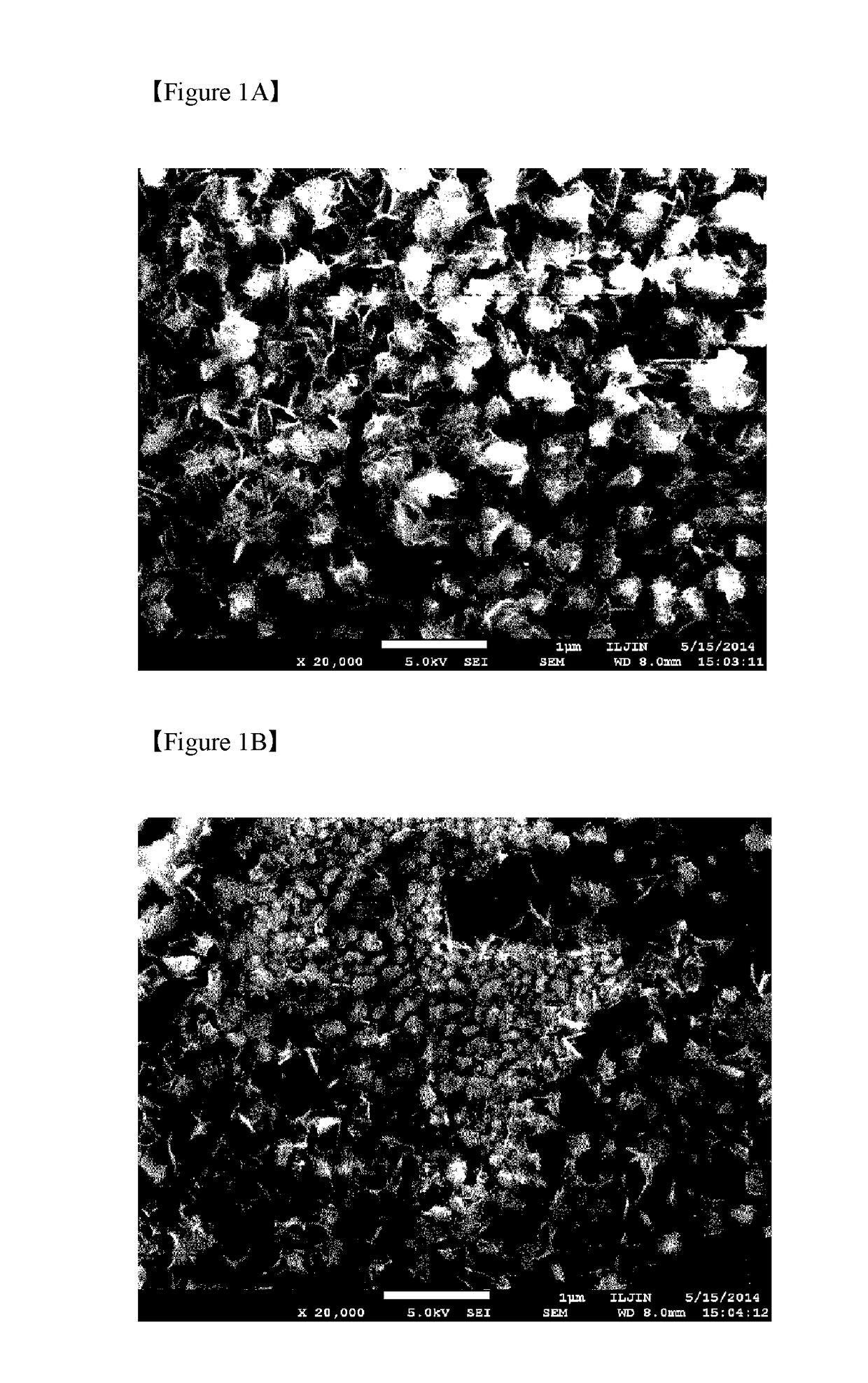Negative active material for secondary battery and secondary battery using the same
a secondary battery and negative active material technology, applied in the direction of cell components, lighting and heating apparatus, heating types, etc., can solve the problems of large irreversibility, intermetallic compound-based negative active material cycle characteristic degradation and obstacles to commercialization, etc., to achieve excellent initial efficiency, small change in volume, and less incurred
- Summary
- Abstract
- Description
- Claims
- Application Information
AI Technical Summary
Benefits of technology
Problems solved by technology
Method used
Image
Examples
example 1
[0061]The present invention will be described in more detail through the Examples.
[0062]In the present Example, Si has a range of 60 to 70% based on at %, and Ti and Fe have a range of 9 to 14% based on at %. In the meantime, the Al has a range larger than 1% and less than 20%, and preferably, a range of 5 to 19%. Most preferably, the Al has the range of 10 to 19%.
[0063]Table 1 below is a table representing a composition range of the Examples of the present invention and the Comparative Examples. In the meantime, Table 2 below relates to an evaluation of a negative active material based on the compositions of Table 1, and particularly, represents a 1CY-charge / discharge quantity, 1CY-efficiency, a 1CY-electrode plate capacity, a 50CY-discharge capacity, 50CY-efficiency, a 50CY-capacity maintenance rate, a 50CY-expansion rate, and an amorphization degree (%) of the Examples and the Comparative Examples. A technical meaning for each item of Table 2 will be described in detail below.
TAB...
PUM
| Property | Measurement | Unit |
|---|---|---|
| 2θ | aaaaa | aaaaa |
| volume fraction | aaaaa | aaaaa |
| energy density | aaaaa | aaaaa |
Abstract
Description
Claims
Application Information
 Login to View More
Login to View More - R&D
- Intellectual Property
- Life Sciences
- Materials
- Tech Scout
- Unparalleled Data Quality
- Higher Quality Content
- 60% Fewer Hallucinations
Browse by: Latest US Patents, China's latest patents, Technical Efficacy Thesaurus, Application Domain, Technology Topic, Popular Technical Reports.
© 2025 PatSnap. All rights reserved.Legal|Privacy policy|Modern Slavery Act Transparency Statement|Sitemap|About US| Contact US: help@patsnap.com



